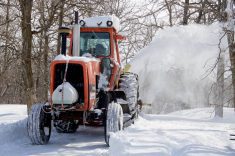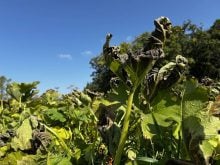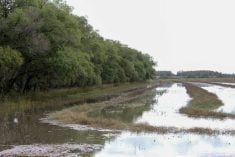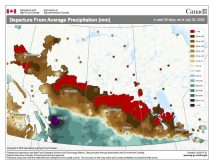After several years of drought or near-drought conditions that significantly reduced groundwater levels, the water tables may be turning.
“In terms of soil moisture, I would say that we have caught up for this season,” says Timi Ojo, an agricultural systems modeller with Manitoba Agriculture who has expertise in soil moisture.
Why it’s important: In Manitoba, there is not enough moisture to sustain the entire growing season, so growers depend on fall rain and spring melt.
Read Also

Seeding Indigenous agricultural prosperity
National Circle for Indigenous Agriculture and Food says Indigenous agricultural success needs strong relationships.
“In terms of groundwater fluctuation, over the last three or four years, we’ve drawn down the groundwater level quite a bit,” says Ojo. “But even with all the precipitation we had this year, although it’s helping with groundwater recharge, it’s not enough to catch up with where we were, say, in 2016.”
[RELATED] Provincial water strategy released
The previous wet cycle ended in 2016. From 2008 to 2016, Manitoba saw several consecutive wet years, including two significant floods (2009 and 2011). So, while the province may not have caught up to 2016 levels, that year is more of a high water mark than an average.
In fact, Ojo says 2008–16 was the tail end of an even longer wet cycle that dates back to the 1970s.
“So, although relative to 2016 its lower, when compared to the historical record, it’s actually typical, if not a little higher, I suspect.”
This turnaround is the result of higher than average snowfall in the winter of 2021–22 combined with heavy rains through spring and summer.
Usually, snowmelt has a limited impact on recharging moisture levels because the ground is frozen at depth and runoff can’t be absorbed, so excess water runs off into lakes and rivers. But conditions this spring saw an unusually gradual melt that allowed more water to be absorbed.
Of course, much of the optimism surrounding “the perfect melt” in March was drowned by three consecutive Colorado lows in April that left fields waterlogged and led to seeding delays.
Nevertheless, some areas of the province remain dry.
“Some areas in the northwest, around Duck Mountain Provincial Park, were showing dry soil moisture levels,” says Ojo. Areas with sandier soils also look dry.
The precipitation outlook for Manitoba, based on Environment Canada’s forecast, is for normal levels of precipitation, but Ojo says it’s best not to rely on long-term precipitation forecasts.
“For precipitation, the accuracy is quite low.”
















